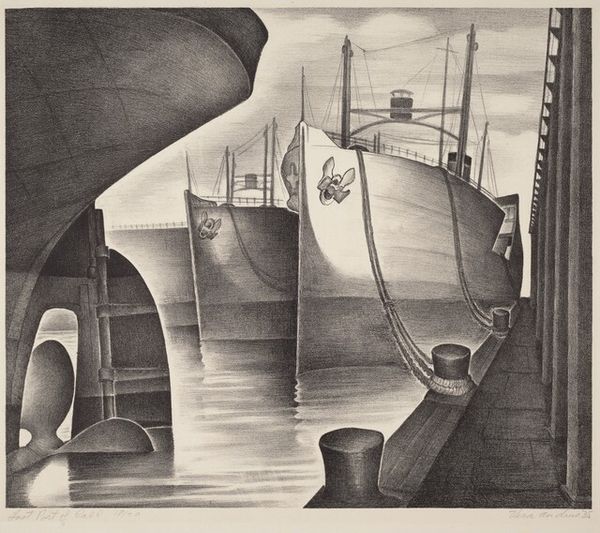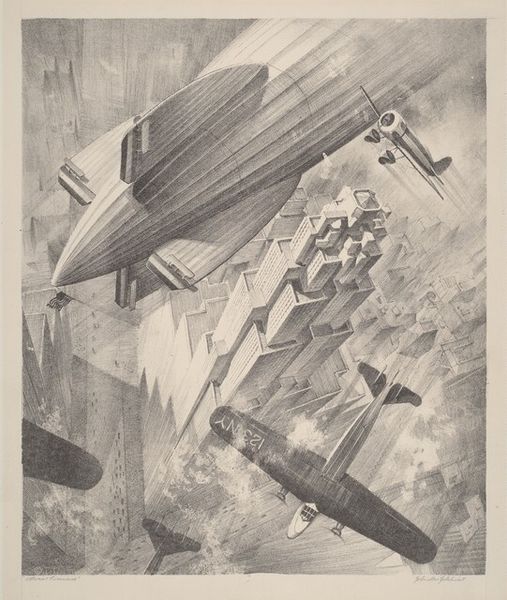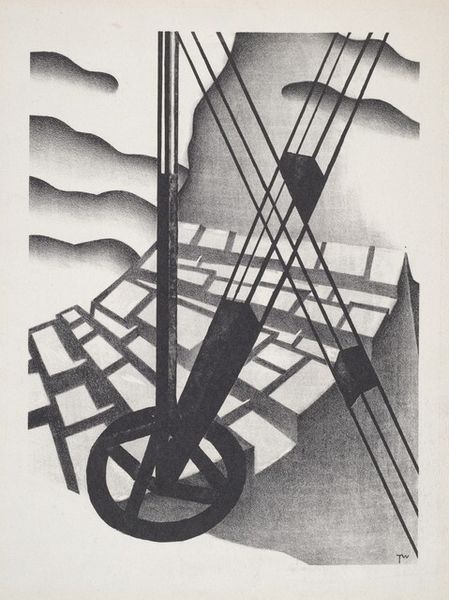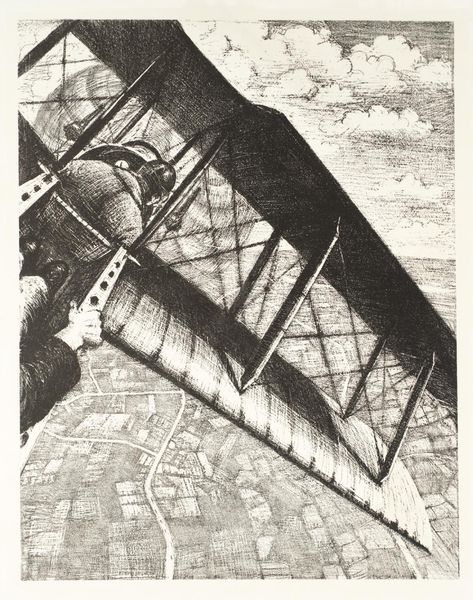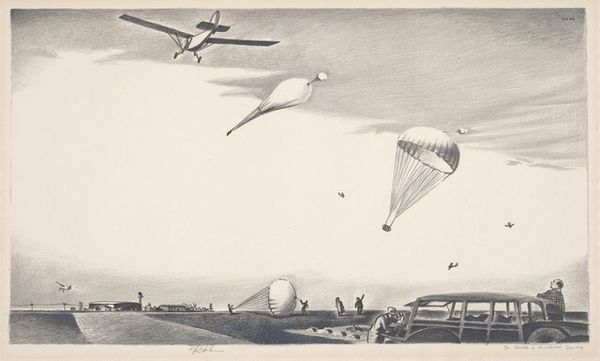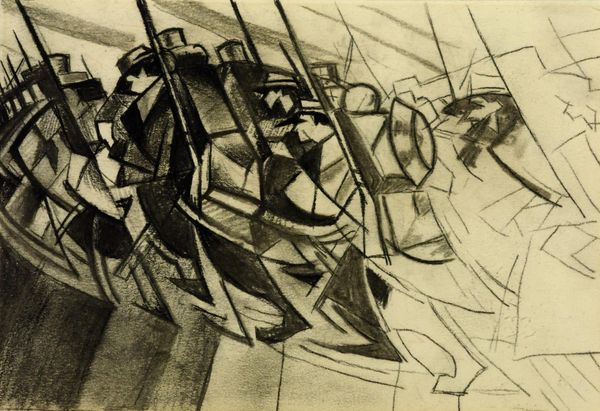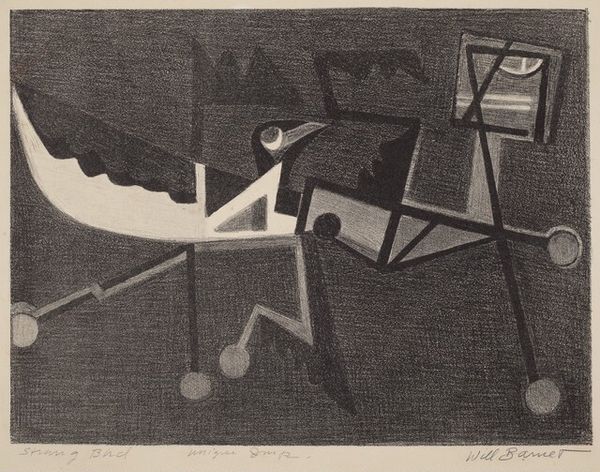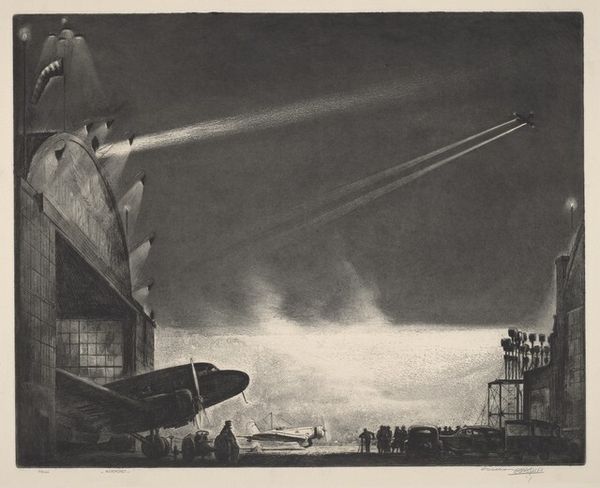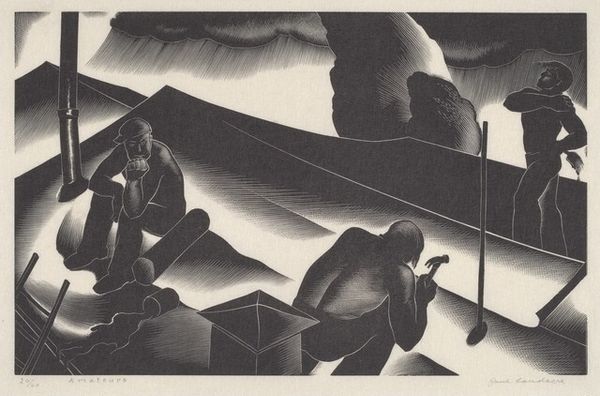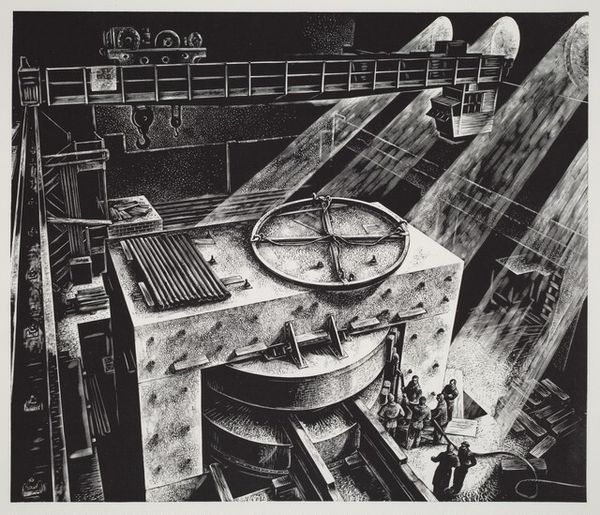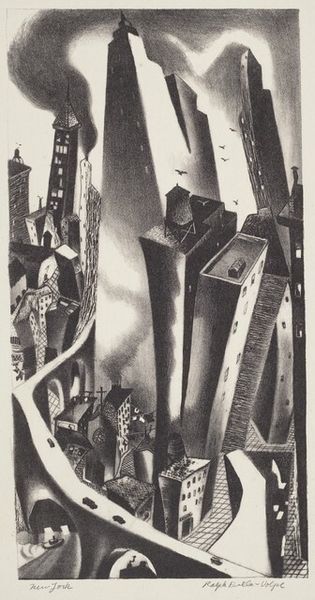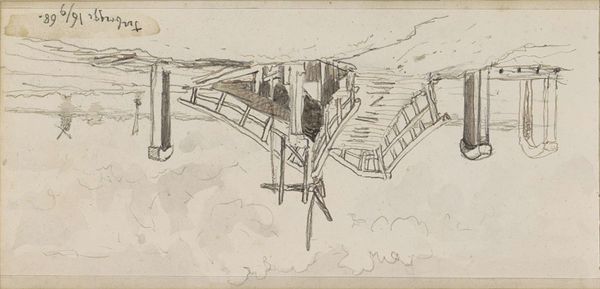
print, etching, graphite
#
pencil drawn
# print
#
etching
#
charcoal drawing
#
pencil drawing
#
abstraction
#
graphite
#
cityscape
#
graphite
#
monochrome
Dimensions: Image: 243 x 344 mm Sheet: 274 x 373 mm
Copyright: National Gallery of Art: CC0 1.0
Editor: So, this etching from 1946 is called "And Sun Throws Shadows," created by Richard Florsheim. I'm immediately drawn to the stark contrasts and almost unsettling perspective; it makes me feel slightly disoriented. What do you see in this piece? Curator: Disorientation is a good starting point. Think about the period – 1946, just after the Second World War. There's a lot of social and cultural upheaval, a sense of unease that artists were grappling with. What seems to be a cityscape is rendered almost abstract. Do you see the towering structures becoming almost oppressive shapes? Editor: I do. They loom over everything, especially those dark, ambiguous objects in the foreground. What could those be? And what is the significance of showing it in monochrome, is there something he wanted to highlight? Curator: Exactly. The monochrome is key. It flattens the space, adding to that feeling of unease. In a post-war context, we might see this as a critique of industrialization and urbanization, the way these forces are reshaping our environment. The objects could be figures, distorted and minimized by the scale of the city. What does that say about the individual's place in the world? Florsheim’s artistic production and visibility occurred in this very tumultuous period; as an historian I see the significance in artworks that provide commentary on political climates or on important social structures such as urbanization. Editor: So it's not just a literal depiction of a city, but a commentary on the individual's place within a rapidly changing society? Curator: Precisely. And who has access to producing this commentary? Who decides what “art” gets displayed and valued? The work prompts these important questions, especially in a museum setting. Editor: That's fascinating; I initially just saw it as an interesting composition, but the historical context adds a whole other layer of meaning. I didn't think of how political it could be to just portray urban life in this way. Curator: Right? Considering the historical period helps you understand and appreciate what this artists work communicates about that moment, beyond what may first strike you about it.
Comments
No comments
Be the first to comment and join the conversation on the ultimate creative platform.

